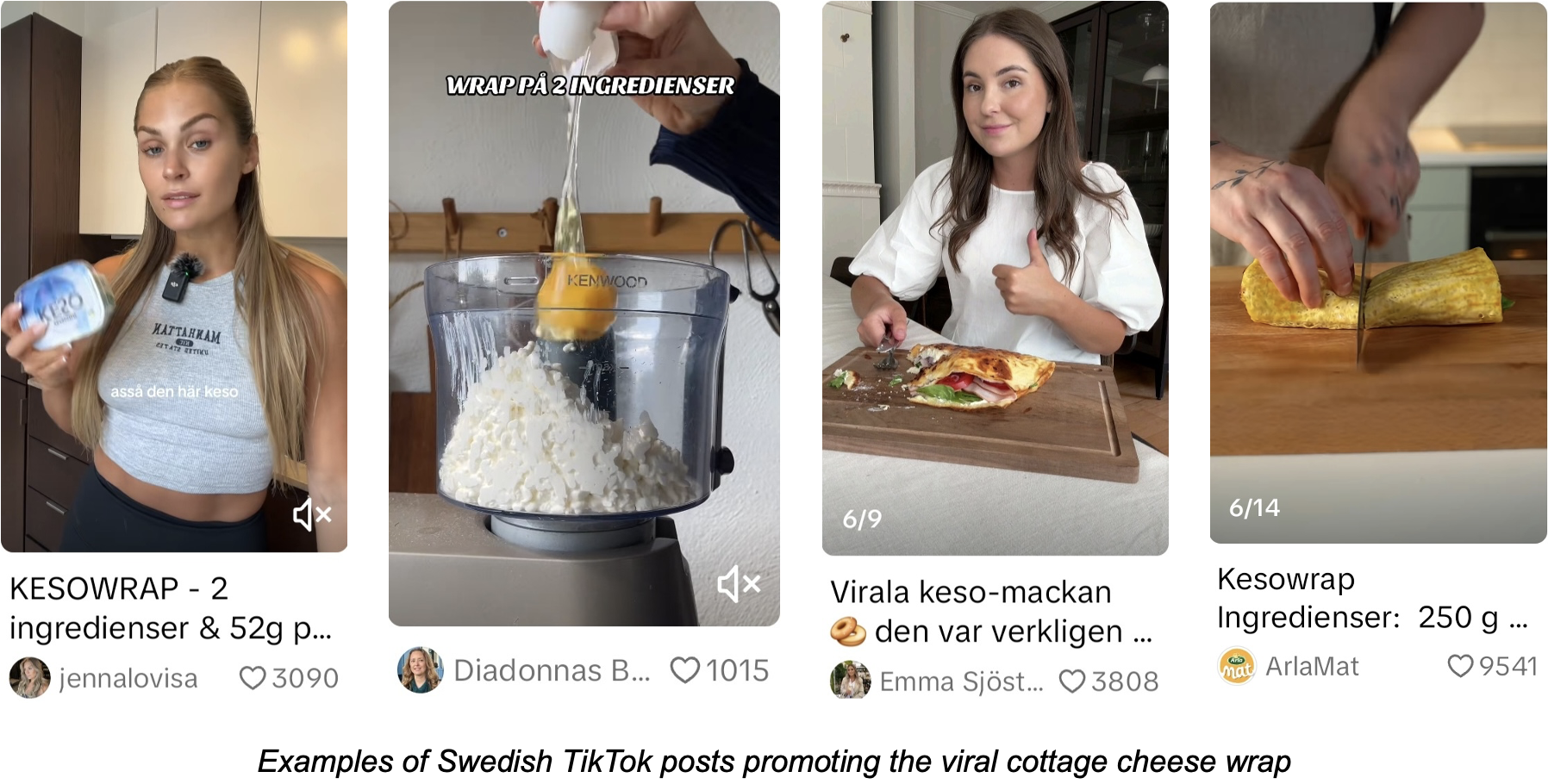America's social media-fuelled cottage cheese explosion has spread to Europe. As in the US, it's based on the credentials of cottage cheese as a simple food that's natural, versatile and a good-tasting way to get more dairy protein.
It all started on TikTok in the US in early 2023, when cottage cheese enjoyed a rebirth after years of being considered a diet food from the 1970s. Consumers started using it to make healthier versions of treats like ice cream or pancakes and suddenly, thanks to the free publicity from TikTok, American cottage cheese sales were up by 16% over the previous year to a total of $1.33 billion. Volume was up by 11% – an amazing achievement in a year in which most supermarket categories were flat or volumes fell.
The market leader, Daisy Dairy, experienced a 36% jump in sales. Even smaller brands benefited, such as Good Culture, whose cottage cheese sales ballooned by 57.2% to nearly $76.5 million, with volume up by 31.2%.
The trend soon spread to Europe. In the UK, one producer reported a 40% increase in sales of cottage cheese between May 2023 and May 2024, putting it down to “the TikTok craze”. UK supermarkets Waitrose and Marks and Spencer reported 22% and 30% increases, respectively, in cottage cheese sales in the same period.
In Sweden, too, it's cottage cheese’s time to shine. In industry publication Livsmedel i fokus, Arla Sweden’s press officer Max Wallenberg said that sales of Arla’s cottage cheese in Sweden have grown 15% more than expected over the past few months. Arla is the main producer of cottage cheese in Sweden and made 30% more cottage cheese in July 2024 than in July 2023. Cottage cheese currently represents around 7% of Arla’s total dairy production in Sweden and the dairy giant is now looking into expanding capacity to be able to meet demand.

Cottage cheese has long played a part in Swedish cuisine and transitioned from a dieting food to something with a wider appeal much earlier than in countries like the US or the UK. Arla’s Keso brand - launched back in 1958 - was marketed as a good source of sustainable energy to a wider target market already in the 1990s. In 2011 the line was extended to include snack pots, featuring pots of cottage cheese with 25g of nuts, seeds and fruit in the lid. The Keso range also includes savoury options, such as cottage cheese blended with onion or paprika and chili.
But even in a country where cottage cheese is already a staple in many households, the power of social media has boosted consumption. This boost was mostly fuelled by a cottage cheese wrap recipe that started to be shared by Swedish influencers in May. Made from cottage cheese and eggs, it makes for a low-carb, high-protein alternative to regular wraps.

The high-protein proposition is a key reason behind cottage cheese’s success in all markets. As much as social media has played a key role, the growth seen would not have been possible were it not for the fact that cottage cheese aligns with what consumers want: a simple food that is naturally functional and provides a good source of protein. Social media enables people to understand those advantages in a way that no advertising campaign could ever have achieved.

